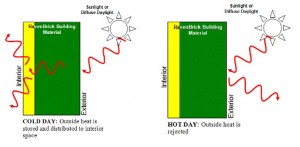There’s an alphabet soup’s worth of agencies involved in research on lithium-ion battery ageing which has resulted in two papers as noted in a May 30, 2014 news item Azonano,
Batteries do not age gracefully. The lithium ions that power portable electronics cause lingering structural damage with each cycle of charge and discharge, making devices from smartphones to tablets tick toward zero faster and faster over time. To stop or slow this steady degradation, scientists must track and tweak the imperfect chemistry of lithium-ion batteries with nanoscale precision.
In two recent Nature Communications papers, scientists from several U.S. Department of Energy national laboratories—Lawrence Berkeley, Brookhaven, SLAC, and the National Renewable Energy Laboratory—collaborated to map these crucial billionths-of-a-meter dynamics and lay the foundation for better batteries.
A May 29, 2014 Brookhaven National Laboratory news release by Justin Eure, which originated the news item, describes the research techniques in more detail,
“We discovered surprising and never-before-seen evolution and degradation patterns in two key battery materials,” said Huolin Xin, a materials scientist at Brookhaven Lab’s Center for Functional Nanomaterials (CFN) and coauthor on both studies. “Contrary to large-scale observation, the lithium-ion reactions actually erode the materials non-uniformly, seizing upon intrinsic vulnerabilities in atomic structure in the same way that rust creeps unevenly across stainless steel.”
Xin used world-leading electron microscopy techniques in both studies to directly visualize the nanoscale chemical transformations of battery components during each step of the charge-discharge process. In an elegant and ingenious setup, the collaborations separately explored a nickel-oxide anode and a lithium-nickel-manganese-cobalt-oxide cathode—both notable for high capacity and cyclability—by placing samples inside common coin-cell batteries running under different voltages.
“Armed with a precise map of the materials’ erosion, we can plan new ways to break the patterns and improve performance,” Xin said.
In these experiments, lithium ions traveled through an electrolyte solution, moving into an anode when charging and a cathode when discharging. The processes were regulated by electrons in the electrical circuit, but the ions’ journeys—and the battery structures—subtly changed each time.
The news release first describes the research involving the nickel-oxide anode, one of the two areas of interest,
For the nickel-oxide anode, researchers submerged the batteries in a liquid organic electrolyte and closely controlled the charging rates. They stopped at predetermined intervals to extract and analyze the anode. Xin and his collaborators rotated 20-nanometer-thick sheets of the post-reaction material inside a carefully calibrated transmission electron microscope (TEM) grid at CFN to catch the contours from every angle—a process called electron tomography.
To see the way the lithium-ions reacted with the nickel oxide, the scientists used a suite of custom-written software to digitally reconstruct the three-dimensional nanostructures with single-nanometer resolution. Surprisingly, the reactions sprang up at isolated spatial points rather than sweeping evenly across the surface.
“Consider the way snowflakes only form around tiny particles or bits of dirt in the air,” Xin said. “Without an irregularity to glom onto, the crystals cannot take shape. Our nickel oxide anode only transforms into metallic nickel through nanoscale inhomogeneities or defects in the surface structure, a bit like chinks in the anode’s armor.”
The electron microscopy provided a crucial piece of the larger puzzle assembled in concert with Berkeley Lab materials scientists and soft x-ray spectroscopy experiments conducted at SLAC’s Stanford Synchrotron Radiation Lightsource (SSRL). The combined data covered the reactions on the nano-, meso-, and microscales.
Next, there’s this about the second area of interest, a lithium-nickel-manganese-cobalt-oxide (NMC) cathode (from the news release),
In the other study, scientists sought the voltage sweet-spot for the high-performing lithium-nickel-manganese-cobalt-oxide (NMC) cathode: How much power can be stored, at what intensity, and across how many cycles?
The answers hinged on intrinsic material qualities and the structural degradation caused by cycles at 4.7 volts and 4.3 volts, as measured against a lithium metal standard.
As revealed through another series of coin-cell battery tests, 4.7 volts caused rapid decomposition of the electrolytes and poor cycling—the higher power comes at a price. A 4.3-volt battery, however, offered a much longer cycling lifetime at the cost of lower storage and more frequent recharges.
In both cases, the chemical evolution exhibited sprawling surface asymmetries, though not without profound patterns.
“As the lithium ions race through the reaction layers, they cause clumping crystallization—a kind of rock-salt matrix builds up over time and begins limiting performance,” Xin said. “We found that these structures tended to form along the lithium-ion reaction channels, which we directly visualized under the TEM. The effect was even more pronounced at higher voltages, explaining the more rapid deterioration.”
Identifying this crystal-laden reaction pathways hints at a way forward in battery design.
“It may be possible to use atomic deposition to coat the NMC cathodes with elements that resist crystallization, creating nanoscale boundaries within the micron-sized powders needed at the cutting-edge of industry,” Xin said. “In fact, Berkeley Lab battery experts Marca Doeff and Feng Lin are working on that now.”
Shirley Meng, a professor at UC San Diego’s Department of NanoEngineering, added, “This beautiful study combines several complementary tools that probe both the bulk and surface of the NMC layered oxide—one of the most promising cathode materials for high-voltage operation that enables higher energy density in lithium-ion batteries. The meaningful insights provided by this study will significantly impact the optimization strategies for this type of cathode material.”
The TEM measurements revealed the atomic structures while electron energy loss spectroscopy helped pinpoint the chemical evolution—both carried out at the CFN….
The scientists next want to observe these changes in real-time which will necessitate the custom design of some new equipment (“electrochemical contacts and liquid flow holders”).
Here are links to and citations for the papers,
Phase evolution for conversion reaction electrodes in lithium-ion batteries by Feng Lin, Dennis Nordlund, Tsu-Chien Weng, Ye Zhu, Chunmei Ban, Ryan M. Richards, & Huolin L. Xin. Nature Communications 5, Article number: 3358 doi:10.1038/ncomms4358 Published 24 February 2014
Surface reconstruction and chemical evolution of stoichiometric layered cathode materials for lithium-ion batteries by Feng Lin, Isaac M. Markus, Dennis Nordlund, Tsu-Chien Weng, Mark D. Asta, Huolin L. Xin & Marca M. Doeff. Nature Communications 5, Article number: 3529 doi:10.1038/ncomms4529 Published 27 March 2014
Both of these articles are behind a paywall and they both offer previews via ReadCube Access.



